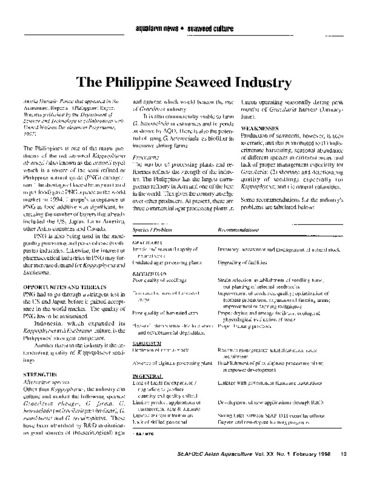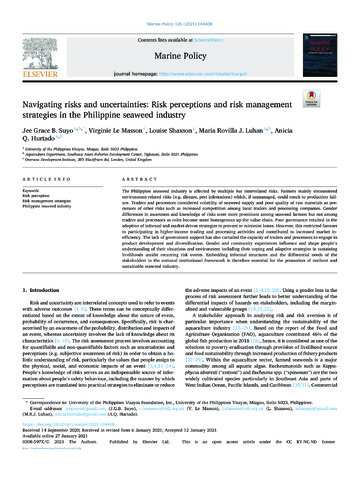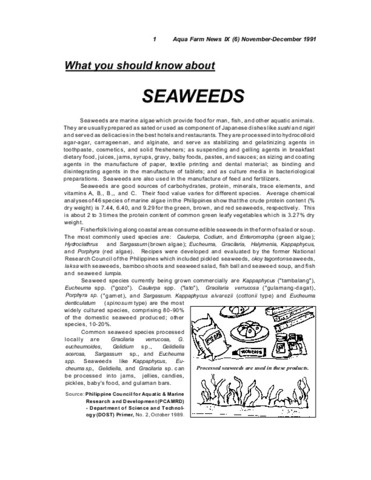Perlihatkan publikasi sederhana
The Philippine seaweed industry
| dc.contributor.author | Hurtado-Ponce, Anicia | |
| dc.date.accessioned | 2013-11-29T08:07:39Z | |
| dc.date.available | 2013-11-29T08:07:39Z | |
| dc.date.issued | 1998 | |
| dc.identifier.citation | Hurtado-Ponce, A. (1998). The Philippine seaweed industry. SEAFDEC Asian Aquaculture, 20(1), 13. | en |
| dc.identifier.issn | 0115-4974 | |
| dc.identifier.uri | http://hdl.handle.net/10862/1788 | |
| dc.description | Already published in the Assessment Reports - (Philippine) Export Winners, published by the Department of Science and Technology in collaboration with United Nations Development Programme, 1997. | en |
| dc.description.abstract | A brief outline is given of the Philippine seaweed industry, which involves mainly the red seaweed Kappaphycus alvarezii, produced as a source of the semi-refined or Philippine natural grade (PNG) carrageenan. Other species cultured and marketed include: Gracilaria changii, G.firma, G.heteroclada, G.manilaensis and G.tenuistipitata. The Philippines has the largest carrageenan refinery in Asia. However, production of seaweeds is rather eratic, which is attributed to the following factors: 1) indiscriminate harvesting, seasonal abundance of different species in different areas and lack of proper management; 2) shortage and deteriorating quality of seedlings, especially for Kappaphycus; and 3) natural calamaties. | en |
| dc.language.iso | en | en |
| dc.publisher | Aquaculture Department, Southeast Asian Fisheries Development Center | en |
| dc.subject | Kappaphycus alvarezii | en |
| dc.subject | Gracilaria | en |
| dc.subject | Philippines | en |
| dc.title | The Philippine seaweed industry | en |
| dc.type | magazineArticle | en |
| dc.citation.volume | 20 | |
| dc.citation.issue | 1 | |
| dc.citation.spage | 13 | |
| dc.citation.journalTitle | SEAFDEC Asian Aquaculture | en |
| dc.subject.asfa | marketing | en |
| dc.subject.asfa | seaweed culture | en |
| dc.subject.asfa | seaweed products | en |
| dc.subject.asfa | harvesting | en |





